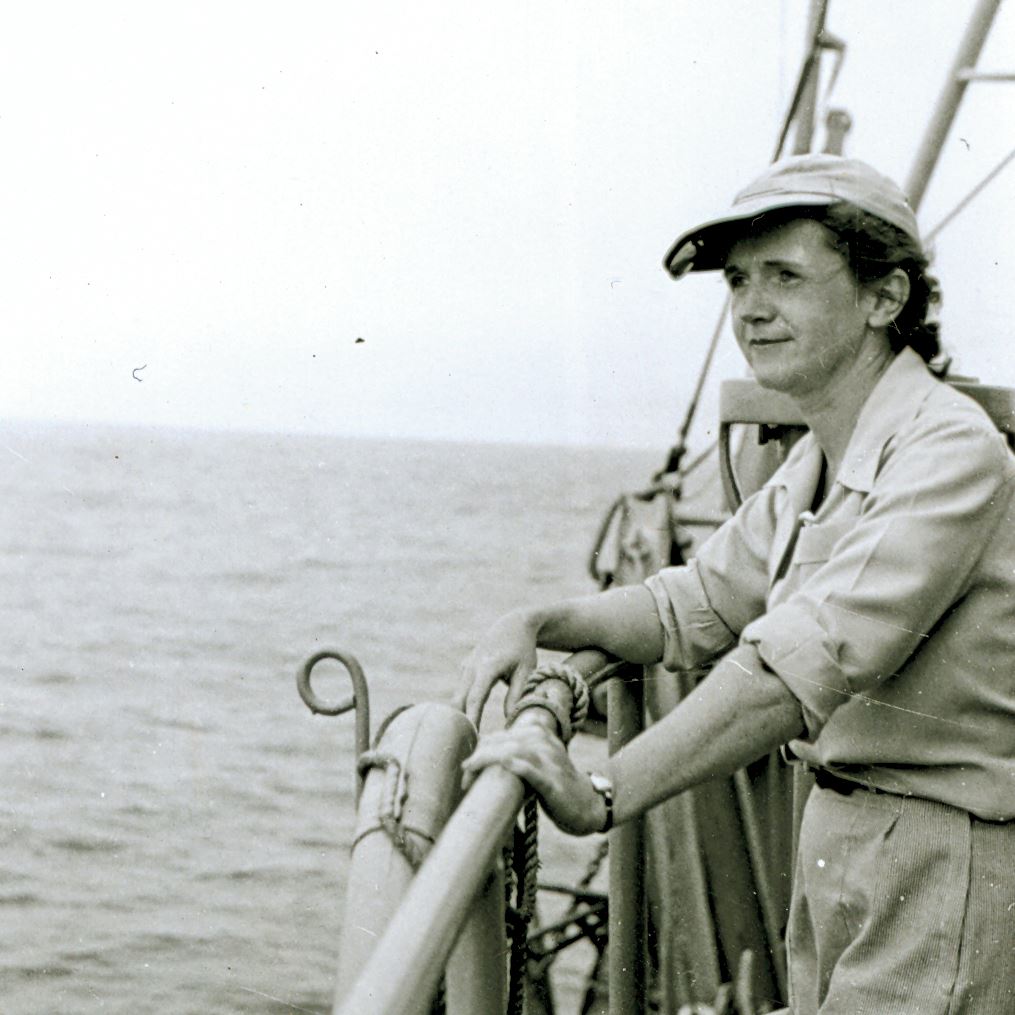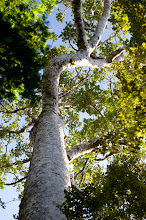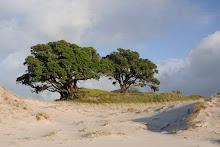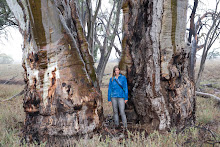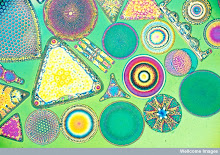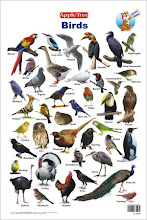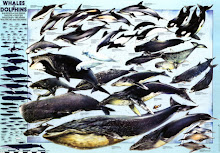RACHEL CARSON
"Contemplating the teeming life of the shore, we have an uneasy sense of the communication of some universal truth that lies just beyond our grasp. What is the message signaled by the hordes of diatoms, flashing their microscopic lights in the night sea?"
"Contemplating the teeming life of the shore, we have an uneasy sense of the communication of some universal truth that lies just beyond our grasp. What is the message signaled by the hordes of diatoms, flashing their microscopic lights in the night sea?"
RACHEL CARSON'S LESSONS 50 YEARS AFTER SILENT SPRING
This broadcast of On the Brink Radio is dedicated to Rachel Carson, one of my absolute greatest heroes of humanity. Her legendary contributions and immense legacy speak for themselves, which is why most of this show is my reading of excerpts from her writings. Please join me to explore the meaning and messages from one of the loveliest spirits ever to incarnate in human form, whose essence speaks more loudly and is more highly relevant now than at any time since they were written.
LISTEN AND/OR DOWN-LOAD ANYTIME ARCHIVE LINK
https://soundcloud.com/user-315121551/on-the-brink-radio-188-rachel-carson

THE EDGE OF THE SEA (1955)
http://rachels-carson-of-today.blogspot.com.au/2009/11/edge-of-sea-excerpts.html
LISTEN AND/OR DOWN-LOAD ANYTIME ARCHIVE LINK
https://soundcloud.com/user-315121551/on-the-brink-radio-188-rachel-carson

THE EDGE OF THE SEA (1955)
http://rachels-carson-of-today.blogspot.com.au/2009/11/edge-of-sea-excerpts.html
PREFACE
“When we go down to the low-tide line, we enter a world that is as old as the Earth itself – the primeval meeting place of the elements of earth and water, a place of compromise and conflict and eternal change. For us as living creatures it has special meaning as an area in or near which some entity that could be distinguished as life first drifted in shallow waters – reproducing, evolving, yielding that endless varied stream of living things that has surged through time and space to occupy the Earth.”
INTRODUCTION
“To understand the shore, it is not enough to catalog its life. Understanding comes only when, standing on a beach, we can sense the long rhythms of earth and sea that sculptured its land-forms and produced the rock and sand of which it is composed; when we can sense with the eye and ear of the mind the surge of life beating always at its shores – blindly, inexorably pressing for a foothold. True understanding demands intuitive comprehension of the whole…”
THE MARGINAL WORLD
“The edge of the sea is a strange and beautiful place. All through the long history of Earth it has been an area of unrest where waves have broken heavily against the land, where the tides have pressed forward over the continents, receded, and then returned… The shore has a dual nature, changing with the swing of the tides, belonging now to the land, now to the sea…
Only the most hardy and adaptable can survive in a region so mutable, yet the area between the tide lines is crowded with plants and animals. In this difficult world of the shore, life displays its enormous toughness and vitality by occupying almost every conceivable niche.
The shore is an ancient world, for as long as there has been an earth and sea there has been this place of the meeting of land and water. Yet it is a world that keeps alive the sense of continuing creation and of the relentless drive of life. Each time that I enter it, I gain some new awareness of its beauty and its deeper meanings, sensing that intricate fabric of life by which each creature is linked with another, and each with its surroundings…
Contemplating the teeming life of the shore, we have an uneasy sense of the communication of some universal truth that lies just beyond our grasp. What is the message signaled by the hordes of diatoms, flashing their microscopic lights in the night sea? What truth is expressed by the legions of barnacles, whitening the rocks with their habitations, each small creature within finding the necessities of its existence in the sweep of the surf? And what is the meaning of so tiny a being as the transparent wisp of protoplasm that is a sea lace, existing for some reason inscrutable to us – a reason that demands its presence by the trillion amid the rocks and weeds of the shore? The meaning haunts and ever eludes us, and in its very pursuit we approach the ultimate mystery of life itself.”

"The great tides at the close of the Middle Ages, with their accompanying snow and ice, furious winds, and inundating floods, are more than five centuries behind us. The era of weakest tidal movements, with a climate as benign as that of the early Middle Ages, is about four centuries ahead. We have therefore begun to move strongly into a period of warmer, milder weather. There will be fluctuations, as earth and sun and moon move through space and the tidal power waxes and wanes. But the long trend is toward a warmer earth; the pendulum is swinging."
RACHEL CARSON ON 'CLIMATE CHANGE'
http://rachels-carson-of-today.blogspot.com.au/2015/04/rachel-carson-on-climate-change-solar.html
http://www.arvindguptatoys.com/arvindgupta/seacarson.pdf
"...day by day and season by season, the ocean dominates the world’s climate. Can it also be an agent in bringing about the long period swings of climatic change that we know have occurred throughout the long history of the earth the alternating periods of heat and cold, of drought and flood?
There is a fascinating theory that it can. This theory links events in the deep, hidden places of the ocean with the cyclic changes of climate and their effects on human history. It was developed by the distinguished Swedish oceanographer, Otto Pettersson, whose almost century-long life closed in 1941- In many papers; Pettersson presented the different facets of his theory as he pieced it together, bit by bit. Many of his fellow scientists were impressed, others doubted. In those days few men could conceive of the dynamics of water movements in the deep sea. Now the theory is being re-examined in the light of modern oceanography and meteorology, and only recently C. E. P. Brooks said: ‘It seems that there is good support for Pettersson’s theory as well as for that of solar activity, and that the actual variations of climate since about 3000 B.C. may have been to a large extent the result of these two agents.’

SILENT SPRING, Rachel Carson, 1962 (excerpts)
http://rachels-carson-of-today.blogspot.com.au/2009/11/silent-spring-rachel-carson-1962.html
THE OBLIGATION TO ENDURE (chapter 3)
"The history of life on earth has been a history of interaction between living things and their surroundings. To a large extent, the physical form and the habits of the earth's vegetation and its animal life have been molded by the environment. Considering the whole span of earthly time, the opposite effect, in which life actually modifies its surroundings, has been relatively slight. Only within the moment of time represented by the present century has one species—man—acquired significant power to alter the nature of his world.
During the past quarter century this power has not only increased to one of disturbing magnitude but it has changed in character. The most alarming of all man's assaults upon the environment is the contamination of air, earth, rivers, and sea with dangerous and even lethal materials. This pollution is for the most part irrecoverable; the chain of evil it initiates not only in the world that must support life but in living tissues is for the most part irreversible. In this now universal contamination of the environment, chemicals are the sinister and little-recognized partners of radiation in changing the very nature of the world—the very nature of its life.Strontium 90, released through nuclear explosions into the air, comes to the earth in rain or drifts down as fallout, lodges in soil, enters into the grass or corn or wheat grown there, and in time takes up its abode in the bones of a human being, there to remain until his death. Similarly, chemicals sprayed on croplands or forests or gardens lie long in the soil, entering into living organisms, passing from one to another in a chain of poisoning and death. Or they pass mysteriously by underground streams until they emerge and, through the alchemy of air and sunlight, combine into new forms that kill vegetation, sicken cattle, and work unknown harm on those who drink from once pure wells. As Albert Schweitzer has said, "Man can hardly even recognize the devils of his own creation."
'THE PEACEFUL ATOM'
DichloroDiphenylTrichloroethane
It took hundreds of millions of years to produce the life that now inhabits the earth—eons of time in which that developing and evolving and diversifying life reached a state of adjustment and balance with its surroundings. The environment, rigorously shaping and directing the life it supported, contained elements that were hostile as well as supporting. Certain rocks gave out dangerous radiation, even within the light of the sun, from which all life draws its energy, there were short-wave radiations with power to injure. Given time—time not in years but in millennia—life adjusts, and a balance has been reached. For time is the essential ingredient; but in the modern world there is no time.
The rapidity of change and the speed with which new situations are created follow the impetuous and heedless pace of man rather than the deliberate pace of nature. Radiation is no longer merely the background radiation of rocks, the bombardment of cosmic rays, the ultraviolet of the sun that have existed before there was any life on earth; radiation is now the unnatural creation of man's tampering with the atom. The chemicals to which life is asked to make its adjustment are no longer merely the calcium and silica and copper and all the rest of the minerals washed out of the rocks and carried in rivers to the sea; they are the synthetic creations of man's inventive mind, brewed in his laboratories, and having no counterparts in nature.
To adjust to these chemicals would require time on the scale that is nature's; it would require not merely the years of a man's life but the life of generations. And even this, were it by some miracle possible, would be futile, for the new chemicals come from our laboratories in an endless stream; almost five hundred annually find their way into actual use in the United States alone. The figure is staggering and its implications are not easily grasped—500 new chemicals to which the bodies of men and animals are required somehow to adapt each year, chemicals totally outside the limits of biologic experience.
Among them are many that are used in man's war against nature. Since the mid-1940's over 200 basic chemicals have been created for use in killing insects, weeds, rodents, and other organisms described in the modern vernacular as 'pests'; and they are sold under several thousand different brand names.
These sprays, dusts, and aerosols are now applied almost universally to farms, gardens, forests, and homes—nonselective chemicals that have the power to kill every insect, the 'good' and the 'bad,' to still the song of birds and the leaping of fish in the streams, to coat the leaves with a deadly film, and to linger on in the soil—all this though the intended target may be only a few weeds or insects. Can anyone believe it is possible to lay down such a barrage of poisons on the surface of the earth without making it unfit for all life? They should not be called 'insecticides,' but 'biocides.' "
It took hundreds of millions of years to produce the life that now inhabits the earth—eons of time in which that developing and evolving and diversifying life reached a state of adjustment and balance with its surroundings. The environment, rigorously shaping and directing the life it supported, contained elements that were hostile as well as supporting. Certain rocks gave out dangerous radiation, even within the light of the sun, from which all life draws its energy, there were short-wave radiations with power to injure. Given time—time not in years but in millennia—life adjusts, and a balance has been reached. For time is the essential ingredient; but in the modern world there is no time.
The rapidity of change and the speed with which new situations are created follow the impetuous and heedless pace of man rather than the deliberate pace of nature. Radiation is no longer merely the background radiation of rocks, the bombardment of cosmic rays, the ultraviolet of the sun that have existed before there was any life on earth; radiation is now the unnatural creation of man's tampering with the atom. The chemicals to which life is asked to make its adjustment are no longer merely the calcium and silica and copper and all the rest of the minerals washed out of the rocks and carried in rivers to the sea; they are the synthetic creations of man's inventive mind, brewed in his laboratories, and having no counterparts in nature.
To adjust to these chemicals would require time on the scale that is nature's; it would require not merely the years of a man's life but the life of generations. And even this, were it by some miracle possible, would be futile, for the new chemicals come from our laboratories in an endless stream; almost five hundred annually find their way into actual use in the United States alone. The figure is staggering and its implications are not easily grasped—500 new chemicals to which the bodies of men and animals are required somehow to adapt each year, chemicals totally outside the limits of biologic experience.
Among them are many that are used in man's war against nature. Since the mid-1940's over 200 basic chemicals have been created for use in killing insects, weeds, rodents, and other organisms described in the modern vernacular as 'pests'; and they are sold under several thousand different brand names.
These sprays, dusts, and aerosols are now applied almost universally to farms, gardens, forests, and homes—nonselective chemicals that have the power to kill every insect, the 'good' and the 'bad,' to still the song of birds and the leaping of fish in the streams, to coat the leaves with a deadly film, and to linger on in the soil—all this though the intended target may be only a few weeds or insects. Can anyone believe it is possible to lay down such a barrage of poisons on the surface of the earth without making it unfit for all life? They should not be called 'insecticides,' but 'biocides.' "
THROUGH A NARROW WINDOW (chapter thirteen)
"For mankind as a whole, a possession infinitely more valuable than individual life is our genetic heritage, our link with past and future. Shaped through long aeons of evolution, oru genes not only make us what we are, but hold in their minute beings the future – be it one of promise or threat. Yet genetic deterioration through man-made agents is the menace of our time, ‘the last and greatest danger to our civilization.’
Again, the parallel between chemicals and radiation is exact and inescapable.
The living cell assaulted by radiation suffers a variety of injuries: its ability to divide normally may be destroyed, it may suffer changes in chromosomal structure, or the genes, carriers of hereditary material, may undergo those sudden changes known as mutations, which cause them to produce new characteristics in succeeding generations. If especially susceptible the cell may be killed outright, or finally, after the passage of time measured in years, it may become malignant.
All these consequences of radiation have been duplicated in laboratory studies by a large group of chemicals known as radio-mimetic or mutation-imitating. Many chemicals used in pesticides – herbicides as well as insecticides – belong to this group of substances that have the ability to damage the chromosomes, interfere with normal cell division, or cause mutations. These injuries ot the genetic material are of a kind that may lead to disease in the individual exposed or they may make their effects felt in future generations.
Only a few decades ago, no one knew these effects of either radiation or chemicals. In those days the atom had not been split and few of the chemicals that were to duplicate radiation has as yet been conceived in the test tubes of chemists. Then in 1927, a professor of zoology in a Texas university,Dr. H. J. Muller, found that by exposing an organism to x-radiation, he could produce mutations in succeeding generations. With Muller’s discovery a vast new field of scientific and medical knowledge was opened up. Muller later received the Nobel Prize in Medicine for his achievement, and in a world that soon gained familiarity with the grey rains of fall-out, even the non-scientist now knows the potential results of radiation.
Although far less noticed, a companion discovery was made by Charlotte Auerbach and William Robson at the University of Edinburgh in the early 1940’s. Working with mustard gas, they found that this chemical produced permanent chromosome abnormalities that cannot be distinguished from those induced by radiation. Tested on the fruit fly, the same organism that Muller had used in his original work with X-rays, mustard gas also produced mutations. Thus the first chemical mutagen was discovered.
Mustard gas as a mutagen has now been joined by a long list of other chemicals known to alter genetic material in plants and animals…
Dr. Peter Alexander, an outstanding British authority, has said that the radio-mimetic chemicals ‘may well represent a greater danger’ than radiation. Dr. Muller, with the perspective gained by decades of distinguished work in genetics, warns that various chemicals (including groups represented by pesticides)…can raise the mutation frequency as much as radiation…As yet far too little known of the extent to which our genes, under modern conditions of exposure s to unusual chemicals, are being subjected to such mutagenic influences."
"For mankind as a whole, a possession infinitely more valuable than individual life is our genetic heritage, our link with past and future. Shaped through long aeons of evolution, oru genes not only make us what we are, but hold in their minute beings the future – be it one of promise or threat. Yet genetic deterioration through man-made agents is the menace of our time, ‘the last and greatest danger to our civilization.’
Again, the parallel between chemicals and radiation is exact and inescapable.
The living cell assaulted by radiation suffers a variety of injuries: its ability to divide normally may be destroyed, it may suffer changes in chromosomal structure, or the genes, carriers of hereditary material, may undergo those sudden changes known as mutations, which cause them to produce new characteristics in succeeding generations. If especially susceptible the cell may be killed outright, or finally, after the passage of time measured in years, it may become malignant.
All these consequences of radiation have been duplicated in laboratory studies by a large group of chemicals known as radio-mimetic or mutation-imitating. Many chemicals used in pesticides – herbicides as well as insecticides – belong to this group of substances that have the ability to damage the chromosomes, interfere with normal cell division, or cause mutations. These injuries ot the genetic material are of a kind that may lead to disease in the individual exposed or they may make their effects felt in future generations.
Only a few decades ago, no one knew these effects of either radiation or chemicals. In those days the atom had not been split and few of the chemicals that were to duplicate radiation has as yet been conceived in the test tubes of chemists. Then in 1927, a professor of zoology in a Texas university,Dr. H. J. Muller, found that by exposing an organism to x-radiation, he could produce mutations in succeeding generations. With Muller’s discovery a vast new field of scientific and medical knowledge was opened up. Muller later received the Nobel Prize in Medicine for his achievement, and in a world that soon gained familiarity with the grey rains of fall-out, even the non-scientist now knows the potential results of radiation.
Although far less noticed, a companion discovery was made by Charlotte Auerbach and William Robson at the University of Edinburgh in the early 1940’s. Working with mustard gas, they found that this chemical produced permanent chromosome abnormalities that cannot be distinguished from those induced by radiation. Tested on the fruit fly, the same organism that Muller had used in his original work with X-rays, mustard gas also produced mutations. Thus the first chemical mutagen was discovered.
Mustard gas as a mutagen has now been joined by a long list of other chemicals known to alter genetic material in plants and animals…
Dr. Peter Alexander, an outstanding British authority, has said that the radio-mimetic chemicals ‘may well represent a greater danger’ than radiation. Dr. Muller, with the perspective gained by decades of distinguished work in genetics, warns that various chemicals (including groups represented by pesticides)…can raise the mutation frequency as much as radiation…As yet far too little known of the extent to which our genes, under modern conditions of exposure s to unusual chemicals, are being subjected to such mutagenic influences."
ONE IN EVERY FOUR (chapter fourteen)
"The battle of living things against cancer began so long ago that its origin is lost in time. But it must have begun, in a natural environment, in which whatever life inhabited the earth, was subjected, for good or ill, to influences that had their origin in sun and storm and the ancient nature of the earth. Some of the elements of this environment created hazards to which life had to adjust or perish. The ultraviolet radiation in sunlight could cause malignancy. So could radiations from certain rocks, or arsenic washed out of soil or rocks to contaminate food or water supplies.
The environment contained these hostile elements even before there was life; yet life arose, and over the millions of years it came to exist in infinite numbers and endless variety…These natural cancer-causing agents are still a factor in producing malignancy; however, they are few in number and they belong to that ancient array of forces to which life has been accustomed, from the beginning.
With the advent of man the situation began to change, for man, alone of all forms of life, can create cancer-producing substances, which in medical terminology are called carcinogens. A few man-made carcinogens have been part of the environment for centuries. An example is soot, containing aromatic hydrocarbons. With the dawn of the industrial era, the world became a place of continuous, ever-accelerating change. Instead of the natural environments there was rapidly substituted an artificial one composed of new chemical and physical agents, many of them possessing powerful capacities for inducing biological change. Against these carcinogens which his own activities had created man had no protection, for even as his biological heritage had evolved slowly, so it adapts slowly to new conditions. As a result these powerful substances could easily penetrate the inadequate defenses of the body.
The history of cancer is long, but our recognition of the agents that produce it has been slow to mature…
One of the most impressive theories of the origin of cancer cells was developed by a German biochemist, Prof. Otto Warburg of the Max Planck Institute of Cell Physiology. Warburg has devoted a lifetime of study to the complex processes of oxidation within the cell. Out of this broad background of understanding came a fascinating and lucid explanation of the way a normal cell can become malignant.
Warburg believes that either radiation or a chemical carcinogen acts by destroying the respiration of normal cells, thus depriving them of energy. This action may result form minute doses often repeated. The effect, once achieved, is irreversible. The cells not killed outright by the impact of such a respiratory poison struggle to compensate for the loss of energy. They can no longer carry on that extraordinary and efficient cycle in which vast amounts of ATP are produced, bgut are thrown back on a primitive and far less efficient method, that of fermentation. The struggle to survive by fermentation continues for a long period of time. It continues through ensuing cell divisions, so that all the descendant cells have this abnormal method of respiration…At last they reach the point where fermentation is able to produce as much energy as respiration. At this point cancer cells may be said to have been created from normal body cells…
The Warburg theory also explains why repeated small doses of a carcinogen are more dangerous under some circumstances than a single large dose. The latter may kill the cells outright, whereas the small doses allow some to survive, though in a damaged condition. These survivors may then develop into cancer cells. This is why there is no ‘safe’ dose of a carcinogen.
In Warburg’s theory we also find explanation of an otherwise incomprehensible fact – that one and the same agent can be useful in treating cancer and can also cause it. This, as everyone knows, is true of radiation, which kills cancer cells but may also cause cancer. It is also true of many of the chemicals now used against cancer. Why? Both types of agents damage respiration. Cancer cells already have a defective respiration, so with additional damage they die. The normal cells, suffering respiratory damage for the first time, are not killed but are set on the path that may eventually lead to malignancy.
Measured by the standards established by Warburg, most pesticides meet the criterion of the perfect carcinogen too well for comfort…they may be creating sleeping cancer cells, cells in which an irreversible malignancy will slumber long and undetected – its cause long forgotten and even unsuspected – it flares into the open as recognizable cancer."

RACHEL CARSON 'AMERICAN EXPERIENCE' DOCO
https://www.youtube.com/watch?v=k4pv2woA7EU
"SOLAR CELL" Jeff Phillips and Liesbet Verstraeten (2008)
"LIVE SIMPLY SO THAT OTHERS MAY SIMPLY LIVE...MAY ALL BEINGS BE PEACEFUL, MAY ALL BEINGS BE HAPPY"
"LIVE SIMPLY SO THAT OTHERS MAY SIMPLY LIVE...MAY ALL BEINGS BE PEACEFUL, MAY ALL BEINGS BE HAPPY"










